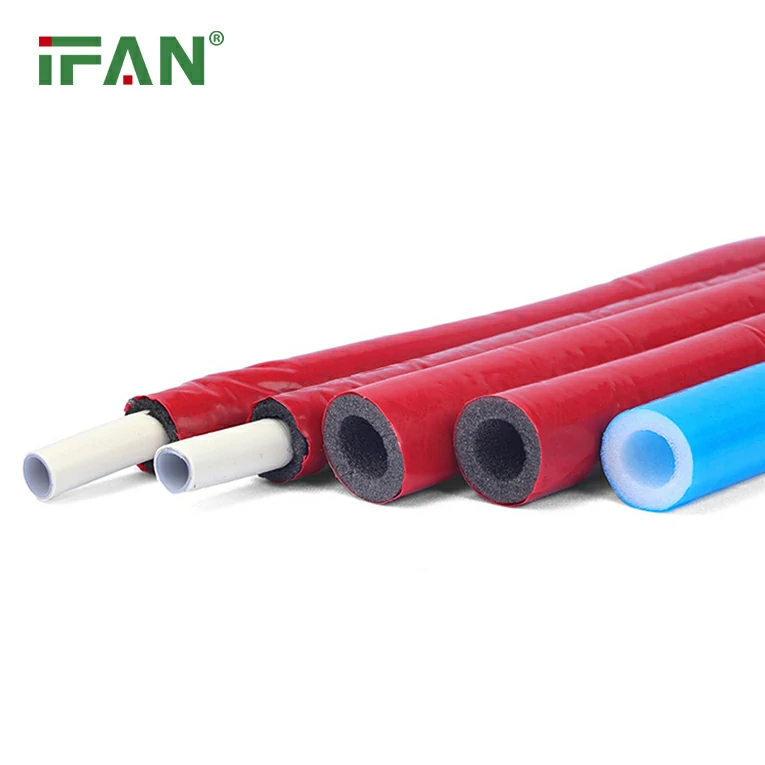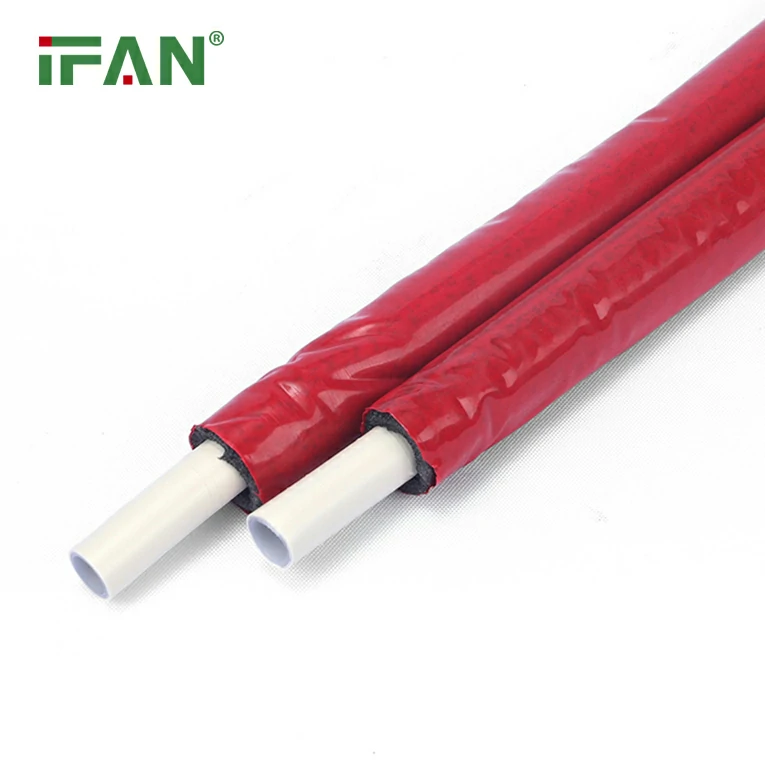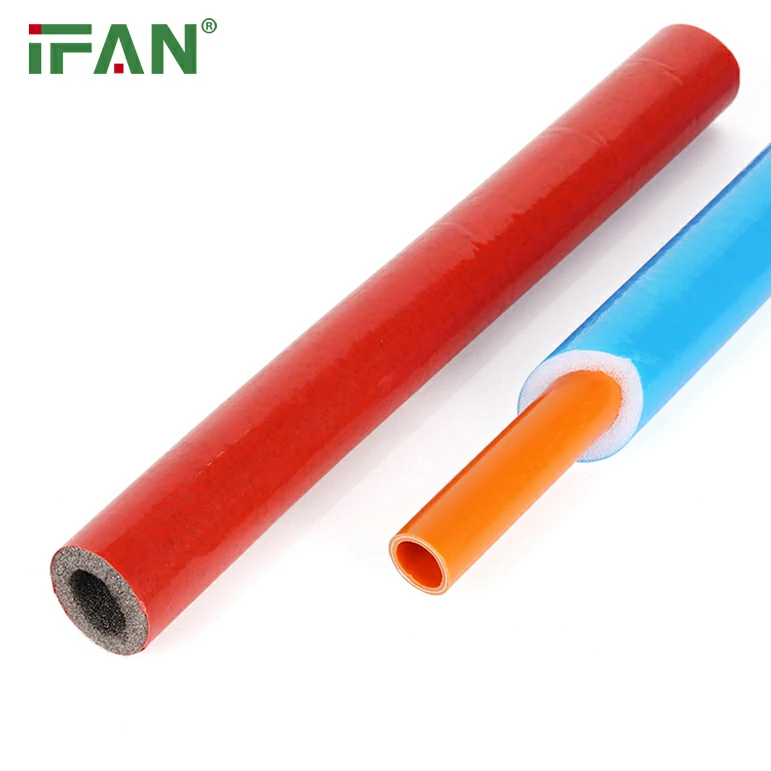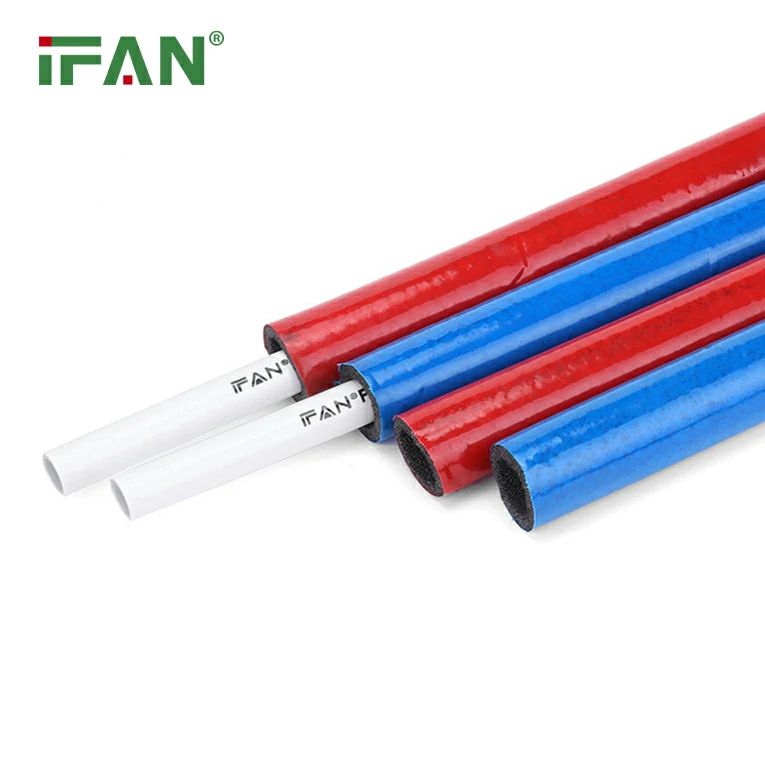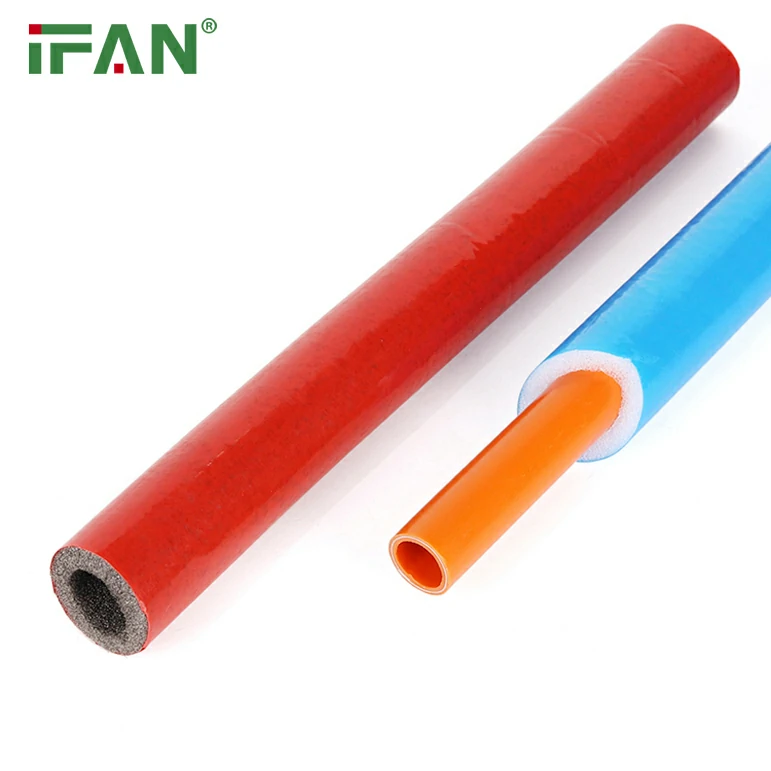In today’s world, sustainability is more than just a buzzword—it’s a necessity. As industries worldwide work to reduce their environmental impact, the plumbing sector is no exception. Uponor, a leading innovator in the plumbing industry, has recently launched a groundbreaking product: the bio-based PEX pipe. This revolutionary material is not only just as durable and flexible as traditional PEX piping but also significantly reduces its carbon footprint by an impressive 90%. In this article, we will explore the environmental and practical benefits of Uponor’s bio-based PEX pipe and how it can shape the future of plumbing systems.
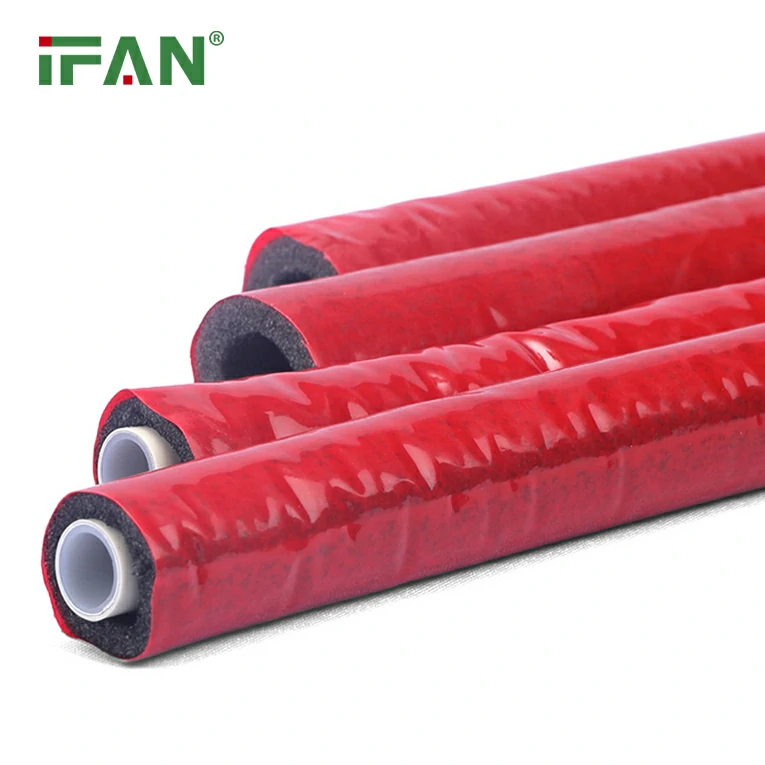
What is PEX Pipe?
PEX, or cross-linked polyethylene, is a type of plastic piping used in plumbing systems. Known for its durability, flexibility, and ease of installation, PEX has quickly become a popular choice for both residential and commercial plumbing. PEX pipes can withstand high temperatures, are resistant to corrosion, and are more flexible than traditional materials like copper and PVC.
However, the environmental impact of traditional PEX pipes has been a concern. Standard PEX is made from petroleum-based polyethylene, a non-renewable resource. While PEX itself is durable, its production process can be energy-intensive, contributing to a higher carbon footprint. This is where Uponor’s bio-based PEX pipe comes into play.
What Makes Uponor’s PEX Bio-Based?
Uponor’s new bio-based PEX pipe is an innovation designed to reduce the carbon footprint associated with the production of traditional PEX. Bio-based PEX is made from renewable resources, such as plant-based materials, instead of relying entirely on fossil fuels. By incorporating biopolymers into the manufacturing process, Uponor has succeeded in creating a product that maintains the excellent qualities of traditional PEX while offering a more sustainable solution.
Bio-based PEX pipe still retains the same flexibility, durability, and resistance to corrosion as conventional PEX. However, its production process uses a blend of renewable raw materials, which drastically reduces the reliance on petroleum-based products. This innovative approach not only helps to conserve non-renewable resources but also offers a major reduction in the environmental impact of the production process.
How Bio-Based PEX Pipe Reduces Carbon Footprint by 90%
The environmental impact of PEX pipes is primarily tied to their production. Traditional PEX is made from polyethylene, which is derived from crude oil—a fossil fuel. The extraction, refining, and processing of petroleum contribute significantly to the carbon emissions associated with traditional PEX.
Uponor’s bio-based PEX pipe solves this problem by substituting a portion of the petroleum-based polyethylene with renewable bioplastics. These bioplastics are made from plant-based materials like corn starch, sugarcane, or other bio-based feedstocks. As a result, the carbon footprint of bio-based PEX pipes is drastically reduced.
1. Sustainable Raw Materials
The most significant factor in reducing the carbon footprint of bio-based PEX is the use of renewable raw materials. Instead of relying on petroleum, the bioplastics in bio-based PEX pipes are sourced from renewable resources. This reduces the overall greenhouse gas emissions that would otherwise result from petroleum extraction and processing.
2. Energy-Efficient Manufacturing Process
Bio-based PEX is manufactured using energy-efficient methods that further reduce its environmental impact. The process of producing bio-based PEX pipes requires less energy compared to the production of traditional PEX, which means fewer carbon emissions are generated during manufacturing. By adopting cleaner production technologies and reducing energy consumption, Uponor’s bio-based PEX pipes contribute to a more sustainable future.
3. Lower Carbon Emissions Across the Life Cycle
The environmental benefits of bio-based PEX extend beyond the manufacturing process. Because the material is made from renewable sources, the overall carbon emissions associated with the product are much lower throughout its entire lifecycle. From production to installation, use, and eventual disposal, bio-based PEX significantly reduces the environmental impact compared to traditional PEX.
Advantages of Bio-Based PEX Pipe
Aside from its sustainability, Uponor’s bio-based PEX pipe offers a number of practical advantages for plumbing systems. Below are some of the key benefits that make bio-based PEX a viable and attractive option for both residential and commercial applications:
1. Durability and Longevity
Bio-based PEX pipes offer the same durability and long-lasting performance as traditional PEX pipes. They are resistant to corrosion, scaling, and freeze damage, making them an excellent choice for both hot and cold water systems. These pipes can endure high temperatures, extreme weather conditions, and the test of time, ensuring that they remain effective throughout the lifespan of the plumbing system.
2. Flexibility and Ease of Installation
One of the main reasons for the popularity of PEX piping is its flexibility, which allows for quick and easy installation. Bio-based PEX pipes retain this flexibility, making them easier to install than rigid alternatives like copper or PVC pipes. Whether used in new construction or retrofitting an existing system, bio-based PEX can be easily bent and routed around obstacles, reducing the need for additional fittings and labor costs.
3. Cost-Effective Solution
While bio-based PEX pipes may come with a slightly higher upfront cost compared to traditional PEX, they offer significant long-term savings. Their durability and low maintenance requirements mean fewer repairs and replacements over the life of the pipe, which ultimately saves homeowners and businesses money. Additionally, the energy-efficient production methods used to make bio-based PEX help keep costs competitive with traditional plumbing materials.
4. Versatility in Applications
Bio-based PEX pipes are suitable for a wide range of applications, from residential plumbing systems to commercial heating and cooling installations. These pipes are ideal for hot and cold water distribution, radiant floor heating, underfloor heating systems, and even industrial heating applications. Their versatility and high performance make them a go-to solution for various plumbing needs.
Comparing Bio-Based PEX with Traditional PEX
It’s important to understand how bio-based PEX stacks up against traditional PEX when considering the overall performance and environmental benefits. The following comparison highlights the key differences between these two materials:
| Feature | Bio-Based PEX Pipe | Traditional PEX Pipe |
|---|---|---|
| Material | Made from renewable plant-based materials | Made from petroleum-based polyethylene |
| Environmental Impact | 90% reduction in carbon emissions | Higher carbon emissions due to petroleum extraction |
| Durability | Comparable to traditional PEX in terms of strength and resistance | Highly durable, resistant to corrosion |
| Installation | Flexible and easy to install | Flexible and easy to install |
| Energy Consumption | Lower energy consumption during production | Higher energy consumption during production |
| Cost | Slightly higher initial cost | Generally lower upfront cost |
Bio-based PEX pipes may have a slightly higher initial cost, but their lower carbon footprint, sustainability benefits, and comparable performance make them an attractive option for environmentally-conscious consumers.
Applications of Bio-Based PEX Pipes
Bio-based PEX pipes are suitable for a variety of applications across residential, commercial, and industrial settings. Some of the most common uses for bio-based PEX pipes include:
1. Residential Plumbing
Bio-based PEX is an excellent choice for residential plumbing systems. These pipes are ideal for water supply lines, radiant floor heating, and underfloor heating systems. Their flexibility makes them easy to install, even in tight spaces, while their durability ensures long-lasting performance.
2. Commercial and Industrial Plumbing
In commercial and industrial settings, bio-based PEX pipes can be used for heating, cooling, and water distribution systems. Hotels, office buildings, schools, and healthcare facilities can benefit from the energy-efficient and environmentally-friendly properties of bio-based PEX. Its resistance to corrosion and ease of installation make it a smart choice for large-scale plumbing applications.
3. Radiant Heating Systems
Bio-based PEX is commonly used in radiant heating systems, where hot water flows through pipes installed beneath the floor to heat the space above. This system is energy-efficient and provides consistent heat throughout the room. Bio-based PEX offers the same advantages as traditional PEX in radiant heating applications, with the added benefit of a reduced environmental impact.
Conclusion
Uponor’s bio-based PEX pipe marks a significant step forward in the plumbing industry’s pursuit of sustainability. By reducing the carbon footprint by 90%, this innovative product addresses both environmental and practical needs in modern plumbing systems. Bio-based PEX pipes offer the same durability, flexibility, and ease of installation as traditional PEX, but with a much lower environmental impact. As consumers and businesses alike prioritize eco-friendly solutions, bio-based PEX piping systems are set to become a key player in shaping the future of sustainable plumbing.
Frequently Asked Questions (FAQ)
1. What is bio-based PEX pipe?
Bio-based PEX pipe is a plumbing material made from renewable, plant-based resources rather than petroleum. It reduces the carbon footprint by 90% compared to traditional PEX pipes.
2. How does bio-based PEX compare to traditional PEX?
Bio-based PEX offers the same durability, flexibility, and ease of installation as traditional PEX, but with a significantly reduced environmental impact.
3. Is bio-based PEX pipe more expensive?
Bio-based PEX may have a slightly higher upfront cost due to the use of renewable materials, but it offers long-term savings through durability and lower maintenance needs.
4. Where can bio-based PEX pipes be used?
Bio-based PEX pipes are ideal for residential plumbing, radiant heating systems, and commercial and industrial applications, including water distribution and heating systems.
**5. What are the environmental benefits of bio-based PEX pipe
?**
Bio-based PEX reduces carbon emissions by 90% during production, conserves non-renewable resources, and has a lower overall environmental impact compared to traditional PEX pipes.

